Die wissenschaftliche Grundlage des angeblichen Einflusses der CO2-Konzentration auf das globale Klima ist der so genannte Treibhauseffekt, der für das Spurengas CO2 nach dem international anerkannten MODTRAN-Programm bei Verdoppelung eine Temperaturerhöhung von ca. 0,6°C bewirken würde. Dies ist sehr wenig und kein Anlass zu Befürchtungen. Die obengenannten hohen Temperaturerhöhungen ergeben sich aus der Annahme des IPCC-Berichtes, dass der geringe CO2-Effekt wesentlich verstärkt würde durch einen dadurch verursachten Wasserdampf-Anstieg (das eigentliche "Treibhausgas" in der Atmosphäre). Allerdings gibt es für diese Annahme immer noch keinen Nachweis.
Die IPCC-Annahme einer Klimasensitivität von 3°C steht auf schwachen Füßen und basiert trotz umfangreicher Forschungs-Investitionen bisher nur auf Modell-Annahmen, nicht aber auf Messungen, was auch durch die immer noch bestehende große Unsicherheit von +/- 1,5°C bestätigt wird.
Aber machen wir einmal mit den umstrittenen hohen Annahmen des IPCC eine kleine, für jedermann verständliche Rechnung auf:
Der gegenwärtige jährliche Anstieg der CO2-Konzentration schwankt zwischen 1,5 und 2,5 ppm mit einem recht stabilen Mittelwert von ca. 2 ppm/Jahr. Der heutige Stand liegt bei 390 ppm und die Verdoppelung auf 780 ppm würde damit nicht weniger als 195 Jahre dauern (!). Mit der "Klimasensitivität" des IPCC-Berichtes, d.h. bei einem globalen Temperaturanstieg von 3°C bei Verdoppelung des CO2-Gehaltes, ergibt sich bis zum immer zitierten Jahr 2100, d.h. in 90 Jahren, ein Temperaturanstieg von 1,38° C (90/195 x 3°).
Eine neue Analyse des NASA Earth Science Team vom Dezember 2010, die erstmalig auch den Kühlungseffekt der durch den CO2-Anstieg verursachten Wachstumsförderung der Vegetation berücksichtigte, kam zu einer CO2-Klimasensitivität von nur 1,64 ° bei Verdoppelung*. In diesem Fall wäre der zu erwartende Temperatureffekt bis zum Jahr 2100 nur 0,76°C – und das ohne jede Reduktion der gegenwärtigen Emissionen !
Nun kann man einwenden, die CO2-Konzentration könnte künftig schneller steigen als mit derzeit 2 ppm/Jahr, aber genauso kann man argumentieren, dass dieser Anstieg auch geringer werden kann durch die Bemühungen, fossile Brennstoffe zu ersetzen und auch durch den zu erwartenden natürlichen Rückgang der Öl- und Gasförderung in den nächsten 50 Jahren
In Anbetracht dieser Tatsachen stellt sich die kritische Frage: Wozu gab es bisher 16 internationale UN-Klimakonferenzen mit bis zu 15 000 Teilnehmern (!) zur Diskussion der Frage der Begrenzung von CO2-Emissionen ? Ein gewaltiger Finanz-Aufwand und jedes Jahr viele Millionen Tonnen zusätzlicher CO2-Emissionen durch die Reisen der Teilnehmer aus 194 Ländern. Davon sollte eigentlich jeder imstande sein, die obige Rechnung selbst durchzuführen.
Oder könnte es sein, dass es einen ganz anderen Grund für diese endlose Zahl gewaltiger Konferenzen gibt ? Wer einmal daran teilgenommen hat, will offenbar auf diesen kostenlosen zweiwöchigen Aufenthalt in den attraktiveren Orten der Erde (Kyoto – Bali – Nairobi – Rio de Janeiro – Genf – New Delhi – Marrakesch – Buenos Aires – Kopenhagen – Cancun, und nächstes Jahr Durban/Südafrika) nicht mehr verzichten. Der wichtigste Beschluss jeder Konferenz war, sich nächstes Jahr wieder zu treffen. Alleine schon deshalb muss wohl eine angebliche "Klimakatastrophe" unbedingt erhalten bleiben.
Dr. D. E.Koelle EIKE
*) http://www.nasa.gov/topics/earth/features/cooling-plant-growth.html
Hier die NASA Presseinformation im Wortlaut:
New NASA Study on CO2 Warming with consideration of the vegetation cooling effect
The cooling effect would be -0.3 degrees Celsius globally and -0.6 degrees C over land, compared to simulations where the feedback was not included, said Lahouari Bounoua, of Goddard Space Flight Center, Greenbelt, Md. Bounoua is lead author on a paper detailing the results that has been published Dec. 7, 2010 in the journal Geophysical Research Letters.
With the negative feedback included, the model found a warming of 1.64 degrees C globally when carbon dioxide was doubled.
Patrick Lynch
NASA’s Earth Science News Team
7. Dez.2010
From NASA Earth Science news: A new NASA computer modeling effort has found that additional growth of plants and trees in a world with doubled atmospheric carbon dioxide levels would create a new negative feedback – a cooling effect – in the Earth’s climate system that could work to reduce future global warming.
The cooling effect would be -0.3 degrees Celsius (C) (-0.5 Fahrenheit (F)) globally and -0.6 degrees C (-1.1 F) over land, compared to simulations where the feedback was not included, said Lahouari Bounoua, of Goddard Space Flight Center, Greenbelt, Md. Bounoua is lead author on a paper detailing the results that will be published Dec. 7 in the journal Geophysical Research Letters.
Without the negative feedback included, the model found a warming of 1.94 degrees C globally when carbon dioxide was doubled.
Bounoua stressed that while the model’s results showed a negative feedback, it is not a strong enough response to alter the global warming trend that is expected. In fact, the present work is an example of how, over time, scientists will create more sophisticated models that will chip away at the uncertainty range of climate change and allow more accurate projections of future climate.
“This feedback slows but does not alleviate the projected warming,” Bounoua said.
To date, only some models that predict how the planet would respond to a doubling of carbon dioxide have allowed for vegetation to grow as a response to higher carbon dioxide levels and associated increases in temperatures and precipitation.
Of those that have attempted to model this feedback, this new effort differs in that it incorporates a specific response in plants to higher atmospheric carbon dioxide levels. When there is more carbon dioxide available, plants are able to use less water yet maintain previous levels of photosynthesis. The process is called “down-regulation.” This more efficient use of water and nutrients has been observed in experimental studies and can ultimately lead to increased leaf growth. The ability to increase leaf growth due to changes in photosynthetic activity was also included in the model. The authors postulate that the greater leaf growth would increase evapotranspiration on a global scale and create an additional cooling effect.
“This is what is completely new,” said Bounoua, referring to the incorporation of down-regulation and changed leaf growth into the model. “What we did is improve plants’ physiological response in the model by including down-regulation. The end result is a stronger feedback than previously thought.”
The modeling approach also investigated how stimulation of plant growth in a world with doubled carbon dioxide levels would be fueled by warmer temperatures, increased precipitation in some regions and plants’ more efficient use of water due to carbon dioxide being more readily available in the atmosphere. Previous climate models have included these aspects but not down-regulation. The models without down-regulation projected little to no cooling from vegetative growth.
Scientists agree that in a world where carbon dioxide has doubled – a standard basis for many global warming modeling simulations – temperature would increase from 2 to 4.5 degrees C (3.5 to 8.0 F). (The model used in this study found warming – without incorporating the plant feedback – on the low end of this range.) The uncertainty in that range is mostly due to uncertainty about “feedbacks” – how different aspects of the Earth system will react to a warming world, and then how those changes will either amplify (positive feedback) or dampen (negative feedback) the overall warming.
An example of a positive feedback would be if warming temperatures caused forests to grow in the place of Arctic tundra. The darker surface of a forest canopy would absorb more solar radiation than the snowy tundra, which reflects more solar radiation. The greater absorption would amplify warming. The vegetative feedback modeled in this research, in which increased plant growth would exert a cooling effect, is an example of a negative feedback. The feedback quantified in this study is a result of an interaction between all these aspects: carbon dioxide enrichment, a warming and moistening climate, plants’ more efficient use of water, down-regulation and the ability for leaf growth.
This new paper is one of many steps toward gradually improving overall future climate projections, a process that involves better modeling of both warming and cooling feedbacks.
“As we learn more about how these systems react, we can learn more about how the climate will change,” said co-author Forrest Hall, of the University of Maryland-Baltimore County and Goddard Space Flight Center. “Each year we get better and better. It’s important to get these things right just as it’s important to get the track of a hurricane right. We’ve got to get these models right, and improve our projections, so we’ll know where to most effectively concentrate mitigation efforts.”
The results presented here indicate that changes in the state of vegetation may already be playing a role in the continental water, energy and carbon budgets as atmospheric carbon dioxide increases, said Piers Sellers, a co-author from NASA’s Johnson Space Center, Houston, Texas.
“We’re learning more and more about how our planet really works,” Sellers said. “We have suspected for some time that the connection between vegetation photosynthesis and the surface energy balance could be a significant player in future climate. This study gives us an indication of the strength and sign of one of these biosphere-atmosphere feedbacks.”
Patrick Lynch?NASA’s Earth Science News Team




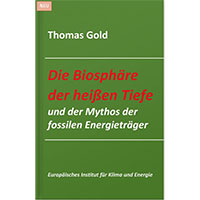

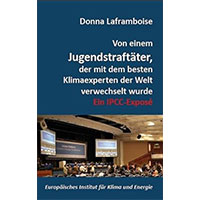
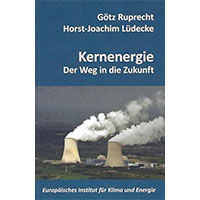


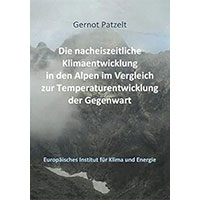
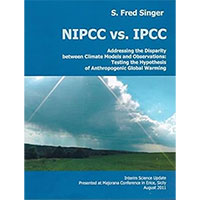




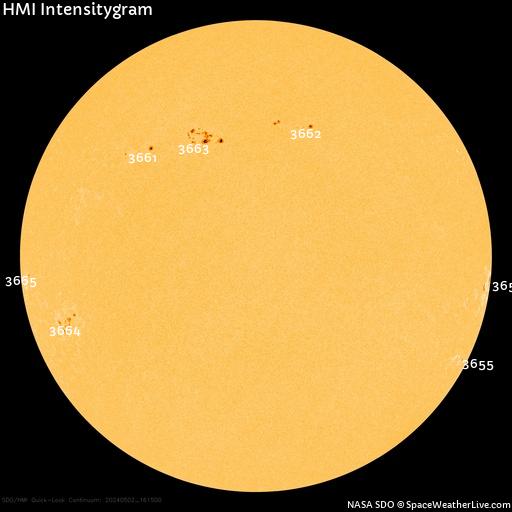
Wir freuen uns über Ihren Kommentar, bitten aber folgende Regeln zu beachten:
- Bitte geben Sie Ihren Namen an (Benutzerprofil) - Kommentare "von anonym" werden gelöscht.
- Vermeiden Sie Allgemeinplätze, Beleidigungen oder Fäkal- Sprache, es sei denn, dass sie in einem notwendigen Zitat enthalten oder für die Anmerkung wichtig sind. Vermeiden Sie Schmähreden, andauernde Wiederholungen und jede Form von Mißachtung von Gegnern. Auch lange Präsentationen von Amateur-Theorien bitten wir zu vermeiden.
- Bleiben Sie beim Thema des zu kommentierenden Beitrags. Gehen Sie in Diskussionen mit Bloggern anderer Meinung auf deren Argumente ein und weichen Sie nicht durch Eröffnen laufend neuer Themen aus. Beschränken Sie sich auf eine zumutbare Anzahl von Kommentaren pro Zeit. Versuchte Majorisierung unseres Kommentarblogs, wie z.B. durch extrem häufiges Posten, permanente Wiederholungen etc. (Forentrolle) wird von uns mit Sperren beantwortet.
- Sie können anderer Meinung sein, aber vermeiden Sie persönliche Angriffe.
- Drohungen werden ernst genommen und ggf. an die Strafverfolgungsbehörden weitergegeben.
- Spam und Werbung sind im Kommentarbereich nicht erlaubt.
Diese Richtlinien sind sehr allgemein und können nicht jede mögliche Situation abdecken. Nehmen Sie deshalb bitte nicht an, dass das EIKE Management mit Ihnen übereinstimmt oder sonst Ihre Anmerkungen gutheißt. Wir behalten uns jederzeit das Recht vor, Anmerkungen zu filtern oder zu löschen oder zu bestreiten und dies ganz allein nach unserem Gutdünken. Wenn Sie finden, dass Ihre Anmerkung unpassend gefiltert wurde, schicken Sie uns bitte eine Mail über "Über Uns->Kontakt"Auch kleine Fortschritte muss man feststellen.
in #38 unterscheidet Herr Baecker zum ersten Mal
Wissenschaft und IPCC (Politik)
Michael Weber
Ich habe eine Rundmail bekommen. Demnach soll die Verbreitung der sogeannten Klimalüge die Wettermanipulation und künstliche Erwärmung der Erde im kalten Krieg vertuschen
http://www.youtube.com/watch?v=wnnv33o_0TI
Lieber Herr Rassbach, #34
„Dazu sagen sie noch solche bösen Sachen wie,
– es gab zwei Wärmeperioden 1910-1940 und 1975 bis 2000 (was haben wir jetzt?)“
Was soll daran „böse“ sein?
Das sind Tatsachen, die die Wissenschaft und der IPCC nicht anders sehen.
Einen positiven globalen Temperaturtrend zeigt sich von 1975 bis 2010 auch.
„- In other words, changes in CO2 can lead to climate change and
climate change can also alter the concentrations of CO2.“
Das ist sowieso klar, dass weiß man seit 100 Jahren.
Lieber Herr Rassbach,
Sie zitieren die Royal Society:
„Jetzt sagen sie,das Ausmass künftiger Temperaturerhöhungen und andere Aspekte des Klimawandels seien noch immer unsicher, vor allem was die einzelnen Weltregionen angehe, es besteht die Möglichkeit, dass bisher unbekannte Aspekte des Klimas und des Klimawandels auftauchen und unser Verständnis signifikant verändern.“
Das ist doch selbstverständlich, neue Erkenntnisse und Einflüsse sind jederzeit möglich, die Wissenschaft ist nicht am Ende.
Sie müssen aber beachten, dass neuere Entdeckungen nicht notwendigerweise das Problem reduzieren, sie können das Problem auch verschärfen.
Das drückt sich z.B. schön am Wert der Klimasensitivität aus: Man geht von ungefähr 3°C aus, die wahrscheinliche Bandbreite reicht aber von 2°C-4,5°C. Denkbar sind also zukünfige Erkenntnisse über feedbacks, die den Wert in Richtung 2° senken. Möglich ist aber auch die andere Richtung!.
Sinnvoll und üblich ist es deshalb, politische Aktivität nicht an solchen Spekulationen, sondern immer am gegenwärtigen Kenntnisstand der Wissenschaft auszurichten.
Lieber Herr Rassbach,
ich sehe überhaupt keine Widersprüche. Die Royal Soc fasst das Wissen ums Klimasystem und seiner Einflußfaktoren zusammen. Und dort werden die Auswirkungen von mehr Treibhausgase in der gleichen Weise quantifiziert wie im IPCC 2007 Bericht.
„Für mich ist es nachwievor normal, dass es langsam wärmer wird, danach wird es irgendwann auch wieder kälter;-)“
Was soll daran auch nicht normal sein, es spielt sich eben alles naturgesetzlich ab. Die Diskussion dreht sich aber doch nicht um die Trivialität des Prinzipiellen, sondern um die Auswirkungen des Ausmaßes, vor allem die absehbaren in der Zukunft, wenn man plausible Szenarien der weiteren wirtschaftlichen Entwicklung zugrunde legt.
„Bisher sagten sie, …Jetzt sagen sie,…“
Können Sie mal auch das „Bisher sagten Sie“-Papier verlinken, ich kann mir kein Bild machen, wo Ihr Problem genau ist? Wollen Sie sagen, das die RoySoc im neuesten Papier auf Empfehlungen im Gegensatz zum alten verzichtete?
Lieber Herr Rassbach,
es mag Sie überraschen, aber als der Bericht der Royal Society neu erschien, habe ich ihn verlinkt und sogar ausdrücklich zur Lektüre empfohlen.
Die Reaktionen auf meine Empfehlung hier waren ernüchternd, aber ich freue mich, dass wenigstens Sie meine Einschätzung teilen. Sie haben ihn aber hoffentlich ganz gelesen, oder?
MfG
Lieber Herr Bäcker #33,
wo sehen Sie da einen Widerspruch?
Für mich ist es nachwievor normal, dass es langsam wärmer wird, danach wird es irgendwann auch wieder kälter;-)
RoySoc:
Bisher sagten sie, dass die menschengemachte Erderwärmung wissenschaftlich nicht bestritten werden könne und CO2 reduziert werden müsse.
Jetzt sagen sie,das Ausmass künftiger Temperaturerhöhungen und andere Aspekte des Klimawandels seien noch immer unsicher, vor allem was die einzelnen Weltregionen angehe, es besteht die Möglichkeit, dass bisher unbekannte Aspekte des Klimas und des Klimawandels auftauchen und unser Verständnis signifikant verändern.
http://tinyurl.com/2u22to8
Dazu sagen sie noch solche bösen Sachen wie,
– es gab zwei Wärmeperioden 1910-1940 und 1975 bis 2000 (was haben wir jetzt?)
– In other words, changes in CO2 can lead to climate change and
climate change can also alter the concentrations of CO2.
Die britischen Wissenschaftler haben sich gestritten und sind zu diesem Ergebnis gelangt.
Das wünsche ich mir in Deutschland auch, bevor weitere Mrd. Steuergelder in die CO2 Vernichtung investiert werden;-)
LieberHerr Rassbach, #26
zur Royal Soc. Die schreiben auch (22), dass die letzte Dekade 0,15 C waermer als die davor war. Und die Erwaermungsszenarien bis werden so wiedergegeben wie sie im IPCC stehen.
Was wollen Sie durch Ihr cherrypicking
eigentlich bezwecken, der Roy Soc etwas
unterstellen, was so nicht ausgedrueckt wurde?
@ Herr Klasen,
„Mir langte ihr Satz „wird NACH dem Erreichen der neuen Gleichgewichtstemperatur“ als interne Begründung für eine Ablehnung.“
Die Missverständnisse scheinen sich zu häufen.
Ich gab hier nicht meine Meinung wieder, sondern eine Zusammenfassung der Ergebnisse des im Artikel vorgestellten NASA-Papers.
Es steht Ihnen frei, es zu lesen und eine verbesserte Zusammenfassung zu formulieren, Herr Klasen.
PS: Die Antwort finden Sie übrigens im Monckton-thread unter #3. Ich hoffe, Sie verstehen diesen Hinweis.
Hr. Fischer,
eigentlich wollte ich sie auf die immer noch ausstehenden Antworten hier http://tinyurl.com/476umyq #6 Aufmerksam machen.
Nachdem ich aber ihre Beiträge in #16 ff gelesen habe, erwarte ich diese Antworten nicht mehr.
Mir langte ihr Satz „wird NACH dem Erreichen der neuen Gleichgewichtstemperatur“ als interne Begründung für eine Ablehnung.
zu #16
Man beachte: Der ehrenwerte Forscher Fischer ignoriert total
1. Dass eine Erwärmung nach einer kleinen Eiszeit
restlos normal und natürlich ist.
2. Dass seine „vorindustriellen Werte“ samt und sonders NIE GEMESSEN wurden. Seine Grundlagen sind Vermutungen mit großen Fehlerbalken und daher als Grundlage nicht geeignet.
3. den Fakt, daß wissenschaftlich unstrittig ist,daß die Erhöhung der CO-2 Werte ein paar Jahrhunderte NACH einer Erwärmung erfolgt.
4.Dass das IPCC keine wissenschaftliche, sondern eine politische Einrichtung ist, die sich anmasst
korrekte Forschung als „Voodoo Science“ zu verteufeln. So geschehen beim Glaciergate.
Bei diesem CO-2-Ablassbriefverkäufer sollte man auch kein gebrauchtes Auto kaufen, denn von den Fehlern seiner „Modelle“ spricht er äußerst ungern.
Michael Weber
@all
Vielleicht wurde die Tragweite meines Beitrags in #18 nicht voll erfasst, deshalb nachträglich eine Verdeutlichung:
Das Ergebnis des Kontrollaufs, der zufälligerweise zu +1,94°C führte, war für die Untersuchung völlig bedeutungslos. In einem anderen Lauf hätte ein Modell auch 5° liefern können. Es ging nur um die Verminderung durch ein sogenanntes biologisches Feedback, das -0,26°C beträgt. Also hätte man statt 5,00°C dann eben +4,74°C.
Man lese sich jetzt die Stellungnahmen gegen Ende des Artikels durch und wird sie jetzt wohl in ihrer Tragweite begreifen.
Korrekt lautet das Ergebnis folgendermaßen:
Unter gewissen Voraussetzungen, nämlich dass global die Pflanzenmasse zunimmt (also keine Waldrodungen mehr!) und dass genügend Wasser zur Verfügung steht, wird NACH dem Erreichen der neuen Gleichgewichtstemperatur eine negatives biologisches Feedback eine Reduzierung der globalen mittleren Temperatur von ca. 0,3°C bewirken.
@ nico bäcker
Keine inhaltlichen Vorwürfe an Herrn Kölle. In meinem verlinkten Film wird deutlich, von wem diese Aussagen stammen. Der Vorwurf an Herrn Koelle lautet lediglich, ohne Prüfung und ohne Quellenangaben kompletten Unsinn unerkannt wiedergegeben zu haben.
(Kurz: Er hat Blödsinn plagiiert)
@ dr paul
„1) der größte Schwachpunkt ist die VORAUSSETZUNG der Klimasensivität
Man kann nicht etwas beweisen wolle, das man vorher voraussetzt.“
Das war aber nicht meine Voraussetzung, sondern die, die der Autor des Artikels selbst festgelegt hat und die er zu einem Widerspruch führen wollte (der wie zu erwarten nicht existiert, s.o.).
#15 Thomas Heinzow
#22 Nico Baecker
Danke Ihnen.
Gruß
H.S.
Lieber Herr Fischer,
ich kann Sie beruhigen.Zum Klima lese ich erst seit drei Monaten in diesen Blogs pro und contra. Da draußen in der Welt ist CO2 noch das schlimmste Gift und ich vermute mal, wir werden es auch in Deutschland noch vergraben.
Nun macht aber das Klima was es will und zur Zeit hält es sich nicht an die IPCC Modelle.
Die Jungs von der NASA haben doch nur eine kleine Unsicherheit eingebaut, um den Glauben an die unweigerliche Klimakatastrophe zu erhalten.
Die Jungs von der Royal Society haben das letzten Herbst, weitgehendst unbemerkt , erledigt. Nachdem sich etwa 43 Klimaforscher beschwerten, legten sie neue Leitlinien zum Stand der Klimaforschung fest:
Bisher sagten sie, dass die menschengemachte Erderwärmung wissenschaftlich nicht bestritten werden könne und CO2 reduziert werden müsse.
Jetzt sagen sie,das Ausmass künftiger Temperaturerhöhungen und andere Aspekte des Klimawandels seien noch immer unsicher, vor allem was die einzelnen Weltregionen angehe, es besteht die Möglichkeit, dass bisher unbekannte Aspekte des Klimas und des Klimawandels auftauchen und unser Verständnis signifikant verändern.
http://tinyurl.com/2u22to8
Dazu sagen sie noch solche bösen Sachen wie,
– es gab zwei Wärmeperioden 1910-1940 und 1975 bis 2000 (was haben wir jetzt?)
– In other words, changes in CO2 can lead to climate change and
climate change can also alter the concentrations of CO2.
Den letzten Satz finde ich am putzigsten. Ist für jedes Weltbild was dabei. Aus den Eisbohrkernen sehen sie eine aktive Rolle des CO2 im Klimasystem. Die Menge, gehalten in Ozeanen,der Sonne??? und Pflanzen hinge von der Temperatur und anderen Bedingungen ab….
Ich wollte Ihnen nur sagen, dass Sie sich beruhigen können, offiziell bleibt CO2 Klimakiller Nr.1…
Es werden doch jetzt nur Rückzüge auf andere Positionen vorbereitet, besonders wenn wir einen vierten strengen Winter bekommen, der Meeresspiegel ansteigt und die Atolle weiter wachsen…;-)
#22 NB sagt:“Denn diese Kopplung der GCM an Biosphaeren und Stoffkreisstoffmodelle inkl. gegenseitiger Wechselwirkung steht seit Jahren auf der roadmap der Klimaforschung.“
Na klar, die Klima-Astrologie muss sich so peu á peu an die Abkühlung anpassen, damit das Gelächter über die Diskrepanz der Modelle mit der Realität nicht zu groß wird.
#16 NF
„macht zusammen 2,93°C in Übereinstimmung zu den 3°C als Wert für die Klimasensitivität.“
1) der größte Schwachpunkt ist die VORAUSSETZUNG der Klimasensivität
Man kann nicht etwas beweisen wolle, das man vorher voraussetzt.
2) Der bisherige Temperaturanstieg hat Vorteile und keine Nachteile gebracht (Ernteanstieg etc),
also auch hier, wenn Sie schon zurückblicken widerlegt die Realität die behauptete Schädlichkeit der Erderwärmung.
3) CO2-Anstieg und Temperatur driften zunehmend auseinander, das ist auch Realität, wenn Sie schon so dumm sind sich NICHT auf die unbeweisbaren Zukunftsprognosen zu beschränken.
Sie sitzen im falschen Boot!
jedenfalls nicht in einem Boot der seriösen Wissenschaft NF!
Lieber Herr Fischer,
ich habe das paper noch nicht gelesen. Aber es ist ja offensichtlich, dass die kühne Reduktion von 8°C in 2100 in der Einleitung (wo hat er das denn ausgegraben?) auf 0,76°C also um einen Faktor 10 nicht durch die Ergebnisse es NASA papers bedingt sind (dort statt „Koelle-Faktor“ 10 nur ein Faktor 1.18 = 1/(1-15%)), sondern Koelles progressiven Klimaschutz-Zielen und einem fehlerhaften Vergleich der Bezugsniveaus (IPCC: 1750, Koelle: heute) entspringt.
Nichts gegen eine einfache nachvollziehbare Rechnung. Nur wenn man nicht weiß, wie das korrekt geht, hilft das auch nichts.
Bravo Herr Koelle.
So ein ehrgeiziges Klimaschutzziel
wie Ihre konstante Emissionsrate sprengt alle politischen Träume.
Konstante Emissionsrate = konstante Energieproduktion, d.h. Sinken pro Kopf bei ansteigender Weltbevölkerung.
Lieber Herr Simonsson, #10
nehmen Sie nur aml als Beispiel
http://tinyurl.com/274k4pm
Die Klimamodelle umfassen heute standardmaessig die Dynamik der Atmosphaer und des Ozeans sowie die gegenseitige Wechselwirkungen. Chemie und Biosphaere sind als optionale Modelle verfuegbar. Diese sind verstaendlicherweise noch komplexer als die Stroemungsmodelle. Daher erfasst man standardmaessig noch nicht die Wechselwirkung zwischen Biosphaere und Atmossphaere Ozean. Das NASA Modell macht das nun mit dem erwarteten Ergebnis einer geringfuegigen Reduktion der Erwaermung. In der naechsten Zeit werden noch mehr Modellergebnisse von anderen Forschungsgruppen kommen. Denn diese Kopplung der GCM an Biosphaeren und Stoffkreisstoffmodelle inkl. gegenseitiger Wechselwirkung steht seit Jahren auf der roadmap der Klimaforschung.
Hallo Herr Keks
Natürlich werden sie weitermachen.Die Faschisten haben auch nicht vor Moskau kapituliert. Aber ihre Wunderwaffe „Wissenschaft“ kehrt sich nun gegen sie selbst und wird sie in einigen Jahren erledigt haben. Das bedeutet noch viel Arbeit, besonders die Profiteure der NP werden sich hart wehren, um ihre Pfründe kämpfen. Die Mitläufer des Systems allerdings werden sich schneller umorientieren und eigentlich schon immer dagegen gewesen sein. Kennt man aus der jüngeren Geschichte. Selbst Herr Baecker gibt immer mehr
Sachen zu, die „weggelassen“ wurden und desavouiert damit die Klimaglaubenwissenschaft.
Deshalb mein wachsender Optimismus.
MfG
Michael Weber
Der Meeresspiegel ist 2010,anscheinend gefallen:
http://tinyurl.com/64s97fr
Nachtrag:
Hier ein Filmchen in youtube über die Hintergründe zu den Meldungen zum Nasa-paper:
http://tinyurl.com/2ebtwt6
Viel Spaß!
Nun zum nächsten schwerwiegenden Missverständnis:
Der Autor schreibt im Einklang mit vielen Skeptikerblosgs:
„Eine neue Analyse des NASA Earth Science Team vom Dezember 2010, die erstmalig auch den Kühlungseffekt der durch den CO2-Anstieg verursachten Wachstumsförderung der Vegetation berücksichtigte, kam zu einer CO2-Klimasensitivität von nur 1,64 ° bei Verdoppelung*.“
Das ist leider komplett falsch!
In der Studie wurde der Einfluss eines hypothetischischen Werts zum biologischen Feedback, genannt „evapotranspiration“ untersucht. Dazu nahm man zuerst einen Kontrolllauf ohne diesen Einfluss vor mit einem Wert von +1,94°C für 2xCO2. Dieser Wert liegt, wie die Autoren schreiben, zwar am unteren Ende der IPCC-Spanne, aber darauf kam es überhaupt nicht an. In einem zweiten Lauf wurde nun das biologische feedback mit eingebaut, Ergebnis:
+1,68°C.
Würde sich der Ansatz bestätigen, würde dieses biologische feedback also die Werte der Klimasensitivität um -0,26°C verringern, wir müssten dann also rund 1,2-4,2°C erhalten, was an der Problematik nichts ändert, wie die Autoren in der Presseerklärung am Ende des Artikels ja auch selbst schreiben.
Aufmerksamen Lesern ist sicherlich eine interessante Kleinigkeit aufgefallen:
Im Artikel steht +1,64°C, ich schreibe aber, dass im NASA-paper +1,68°C steht. Ein Tippfehler des Autors?
Nun, dieser Fehler zieht sich durch sämtliche Skeptikerblogs durch, bis zum eigentlichen Urheber, einem Ex-Militärangehörigen namens Page. Dieser hat wohl nur die Presseerklärung, nicht aber das Paper gelesen. Dort stehen die +1,94°C der Kontrollsimulation, anstatt der exakten Abkühlung von -0,26°C aber der gerundete Wert von -0,3°C. Seine Rechnung 1,94°-0,3° ergab also diesen seltsamen Tippfehler von +1,64°C, was beweist, dass bisher niemand in den zahlreichen Blogs das paper überhaupt gelesen hat.
Nebenbei:
Die Ergebnisse wurden mithilfe von Klimasimulationsprogrammen erstellt. Jetzt auf einmal sind diese sonst geschmähten Programme herzlich willkommen, weil man (fälschlicherweise) von einem genehmen Ergebnis ausging? Das Gegenteil von sceptical heißt gullible.
PS:
Liebes EIKE-Team.
Ich finde diesen Beitrag sehr wichtig und hielte es für die weitere Diskussion im thread für bedeutsam, ihn zu veröffentlichen. Bitte zeigen Sie Größe und ringen Sie sich durch.
@#8: besso keks
Hallo Herr Keks,
danach sieht noch nicht ganz aus. Herr Hansen glaubt wohl immer noch, dass er die Weltherrschaft erringen kann, siehe
http://tinyurl.com/6dlktqd
auch die katholische Kirche hat nicht aufgegeben nachdem man die Meinung nicht mehr durchsetzen konnte, dass die Erde eine Scheibe und der Mittelpunkt des Universums ist.
Es ist schon lustig. Da kämpfen ein paar Technokraten gegen Unmengen Gläubiger.
Es fällt mir ausgesprochen schwer, diesen Artikel zu kommentieren, weil fast in jedem Satz etwas steckt, was einer Richtigstellung bedarf.
Ich möchte mich daher auf die zentrale Aussage beschränken:
„Eine sachliche Analyse dieser Klimafantasien auf der Grundlage der IPCC-eigenen Annahmen führt zu einem überraschenden Ergebnis: es gibt keine reale Basis für solche alarmistischen Erwärmungs-Spekulationen.“
Schauen wir uns die Rechnung dazu an:
„Der gegenwärtige jährliche Anstieg der CO2-Konzentration schwankt zwischen 1,5 und 2,5 ppm mit einem recht stabilen Mittelwert von ca. 2 ppm/Jahr. Der heutige Stand liegt bei 390 ppm und die Verdoppelung auf 780 ppm würde damit nicht weniger als 195 Jahre dauern (!). Mit der „Klimasensitivität“ des IPCC-Berichtes, d.h. bei einem globalen Temperaturanstieg von 3°C bei Verdoppelung des CO2-Gehaltes, ergibt sich bis zum immer zitierten Jahr 2100, d.h. in 90 Jahren, ein Temperaturanstieg von 1,38° C (90/195 x 3°).“
Ok, die Linearisierung durch die Dreisatz-Rechnung ist eine sehr grobe Näherung eines logarithmischen Zusammenhangs, aber akzeptieren wir den Wert von 1,38°C bis 2100 mal als Näherung.
Mich überrascht, dass noch niemand den eigentlichen Fehler des Autors kommentiert hat.
Das IPCC fasst die wissenschaftlichen Erkenntnisse zusammen, indem gesagt wird, eine Verdopplung der VORINDUSTRIELLEN Konzentration von 280 ppm auf 560 ppm führt zu einer Erwärmung von 2,5-4°C mit wahrscheinlichstem Wert von 3°C.
Der Autor geht dagegen von einer Verdopplung der JETZIGEN Konzentration von 390ppm auf 780ppm aus, er lässt also die Steigerung von 280 auf 390ppm unberücksichtigt.
Diese 110 ppm führen zu einer Erwärmung von ungefähr 1,5°C (wie jeder nachrechnen kann), von denen bereits 0,8-0,9°C realisiert sind. Das fehlende halbe Grad ist der thermischen Trägheit der Ozeane geschuldet, dieses halbe Grad stellt sich also noch ein, selbst wenn es gelänge, ab heute die CO2-Konzentration konstant zu halten.
Ergebnis:
Erwärmung von vorindustrieller Zeit bis heute: 1,5°
Von heute bis 2100 laut Autor 1,43°,
macht zusammen 2,93°C in Übereinstimmung zu den 3°C als Wert für die Klimasensitivität.
Wo bitte steckt nun der angekündigte innere Widerspruch?
Schlussbemerkung:
Der Autor geht als Voraussetzung von einem konstanten Zuwachs um 2ppm pro Jahr aus. Dieser Ansatz entspricht also keinem business-as-usual-Szenario für CO2 (seit Jahrzehnten messen wir einen sich beschleunigenden Zuwachs), er impliziert im Gegenteil schon ein gewisses Maß an Gegensteuern. Mich hätte der Grund für diese Maßnahme interessiert: Sieht der Autor da erste zarte Erfolge einer Klimapolitik, sieht er eine Verknappung von Öl und Gas oder technologische Innovationen als Grund dafür?
@ #10
„Mich würde wirklich mal interessieren, was im Detail eigentlich bei der Klimamodellierung alles einfließt. Weiß jemand, wie und wo man das in Erfahrung bringen kann? “
Sehr geehrter Herr Simonsson,
wenn Sie wissen wollen, was in den sog. Klimamodellen – korrekte Bezeichnung ist General Circulation Models – repräsentiert wird und was nicht, müssen Sie die Modellierer fragen oder entsprechende Bücher bzw. Fachartikel lesen.
Je nach Auflösung werden z.B. die Gebirge und Küstenlinien nicht repräsentiert. Die Auflösung T63 bedeutet z.B. einen Gitterpunktsabstand von ca. 1,875°.
In derart groben Rastern kann man recht wenig der räumlichen und zeitlichen Variabilität des Wetters, Klimas und der beeinflusseneden Faktoren repräsentieren bzw. errechnen. Und ein großer Teil der Physik ist parametrisiert.
Es sind mit Sicherheit grandiose Konstrukte des menschlichen Geistes, aber trotzdem nur imperfekte Modelle, die die Realität nur grob widerspiegeln können.
mfg
Thomas Heinzow
Der Abkühlungseffekt reduziert sich auch noch durch die Abholzung der Urwälder zugunsten der Biomasseerzeugung zur Rettung der Welt vor dem Treibhauseffekt, also vorm Untergang?
Lieber Herr Bäcker,
kommt ihnen das Verhalten der NASA bekannt vor?
Bauen sie etwa , wie die Royal Society, eine kleine Unsicherheit für die Zukunft ein?
Kann ja wieder anders kommen;-)
Lieber Herr Becker, #4:
„sondern bewußt weggelassen, weil der Effekt quantitativ nicht so groß ist aber die Berechnung kompliziert“
Vor 3 Milliarden Jahren bestand die Uratmosphäre überwiegend aus Kohlendioxid (10%!) und Stickstoff.
Damals sollen extreme Temperaturschwankungen geherrscht haben. -150° bis +300° auf dem Fels in der prallen Sonne.
Das allein spricht nicht gerade für die Klimawirksamkeit des CO2 denn Treibhauseffekt impliziert auch eine Temperaturstabilisierende Wirkung.
Erst die Photosynthese der Pflanzen hat dann das CO2 aus der Luft absorbiert und mit O2 ersetzt.
Die Biologie ist ein entscheidende Faktor und hat das Klima auf der Erde zu dem gemacht was es heute ist.
Nicht das Klima war gut so dass das Leben sich entfalten konnte sondern das Leben hat sich das Klima geschaffen.
Aber klar, Effekt nicht so groß und kompliziert nur die Berechnungen
Auch von mir ein Lob für diesen Artikel. Die Fakten werden so verständlich erklärt, dass es wirklich jeder versteht. Wer dennoch an dem Klima-Fanatismus festhält, dem ist nun wirklich nicht mehr zu helfen.
#4 NB
„Wie hoch ist denn der dadurch bedingte Abkühlungseffekt im Vergleich zum gesamten Erwärmungseffekt, hm?“
Wie, das können Sie nicht modellieren???
Ich kann:
MINUS 0,066251757732577
Mich würde wirklich mal interessieren, was im Detail eigentlich bei der Klimamodellierung alles einfließt. Weiß jemand, wie und wo man das in Erfahrung bringen kann?
#1 kann ich mich nur anschließen. Weiter so.
Gruß
H.S.
dann sollte sich die Politik auf Koelles Konstant-Raten-Emissionsszenario einschießen. Da wäre ja das 2 Grad Ziel noch erreichbar bis 2100.
Resumee des neuen papers: 15% weniger Temperaturanstieg (= 0.3/1.94). Wenn man also eine Klimasensitivität von 2.5 bis 4 °C angibt, so muss man sie jetzt vielleicht reduzieren auf 2.1 bis 3.4. Anderereseits weiß man auch, dass der C-Zyklus die Klimasensitivität wieder vergrößert. Also muss amn sich das Ganze nochmal genauer angucken. Aber die Änderungen liegen ja innerhalb der ohnehin angegebenen Unsicherheiten.
@#5: Michael Weber sagt:
„Die Glaubenshoheit
hat sie behalten, die Faktenhoheit ist für sie verloren. Das ist der Anfang vom Ende der AGW-Bewegung“
Schön wärs, aber so schnell werden die Ökofaschisten nicht aufgeben…
Herr Bäcker #4,
„das wurde nicht übersehen, sondern bewußt weggelassen, weil der Effekt quantitativ nicht so groß ist aber die Berechnung kompliziert.“
Nicht so groß?
„Wie hoch ist denn der dadurch bedingte Abkühlungseffekt im Vergleich zum gesamten Erwärmungseffekt, hm?“
Immerhin ist er so groß, dass die Prognosen deutlich runtergeschraubt werden müssen und man sich sehr unsicher über die ganze Theorie ist.
#4
Herr Bäcker
Was nicht passt wird also weggelassen?
Was wurde sonst nicht berücksichtigt, da es nicht ins System passt?
Aber andere, in die Gegenrichtung weisende Faktoren werden in jedem Fall eingebaut?
Kommen Sie doch endlich mal auf den Boden der Tatsachen zurück. Mich würde außerdem interessieren, wie Sie es zeitlich schaffen, zu jedem Artikel auf Eike diverse Kommentare, Anmerkungen usw. abzuliefern.
Oder nennen Sie uns doch Ihren AG, damit wir Ihre Anmerkungen ähnlich wie die bezahlten Fähnchenschwenker in diversen Diktaturen einordnen können.
MfG
Andreas Hoemann
„Dieses neue Paper ist einer von vielen Schritten zur Verbesserung künftiger Klima-Voraussagen.“ Wie man sehen kann wird die AGW-Gemeinde von der von ihr in Gang gebrachten Forschung in ernsthafte Schwierigkeiten gebracht. Ihre These wird immer mehr von Fakten widerlegt.Die Meere steigen nicht, die Hurricanes
wollen nicht zunehmen und das CO-2 trägt zu seiner eigenen Abkühlung bei.Die Glaubenshoheit
hat sie behalten, die Faktenhoheit ist für sie verloren. Das ist der Anfang vom Ende der AGW-Bewegung.
Michael Weber
Herr Wolff, #3
das wurde nicht übersehen, sondern bewußt weggelassen, weil der Effekt quantitativ nicht so groß ist aber die Berechnung kompliziert.
Wie hoch ist denn der dadurch bedingte Abkühlungseffekt im Vergleich zum gesamten Erwärmungseffekt, hm?
„Eine neue Analyse des NASA Earth Science Team vom Dezember 2010, die erstmalig auch den Kühlungseffekt der durch den CO2-Anstieg verursachten Wachstumsförderung der Vegetation berücksichtigte…“
Wenn dieser wichtige Punkt in den Klimamodellen bislang tatsächlich nicht berücksichtigt wurde – was hat man dann erst noch alles „übersehen“?
Entscheidend ist doch, wie das GESAMTE System auf Klimaveränderungen reagiert, und somit eine Balance herstellt. Solange die Modelle das nicht erfassen können, bleiben alle Berechnungen sinnlos.
Hier eine weitere „Katastrophenmeldung“!
Klima: Zukunft heißer als prognostiziert?
„Wenn die Emission von Treibhausgasen weiter so anhält, könnten die Temperaturen der Erde noch stärker ansteigen, als bisher prognostiziert. Das jedenfalls zeigt eine jetzt in „Science“ erschienene Studie. In ihr analysierte ein Forscherteam das Klima vor 30 bis 100 Millionen Jahren, einer Ära, in der die Treibhausgaskonzentration der Atmosphäre ähnlich hoch lag wie für das Ende dieses Jahrhunderts prognostiziert.“
Quelle: http://tinyurl.com/5vmyg6f
Was mich Nachdenklich stimmt, wie locker die Forscher dort mit den „Klimadaten“ von 30 – 100 Millionen Jahren umgehen, darauß ihr Schlüsse ziehen und diese dann bekannt geben. Leider passt dies mal wieder ins Bild, anstatt Objektivität nur Alarmismus! Schade.
Sehr geehrte Damen und Herren,
ich möchte Ihnen einmal an dieser Stelle für für Ihre Arbeit danken.
So gut wie alle Leser sind zum Thema Klimawandel mehr oder weniger Laien und müssen sich an das halten, was veröffentlicht wird.
Und da ist EIKE die Leuchte in einem Meer von Desinformation, mit der die Öffentlichkeit von allen Seiten jeden Tag regelrecht zugemüllt wird. Für mich sind Ihre Kommentare immer wieder erfrischend und vor Allem überzeugend in ihrer Argumentation und Stichhaltigkeit.
Deshalb nocheinmal: Vielen Dank!